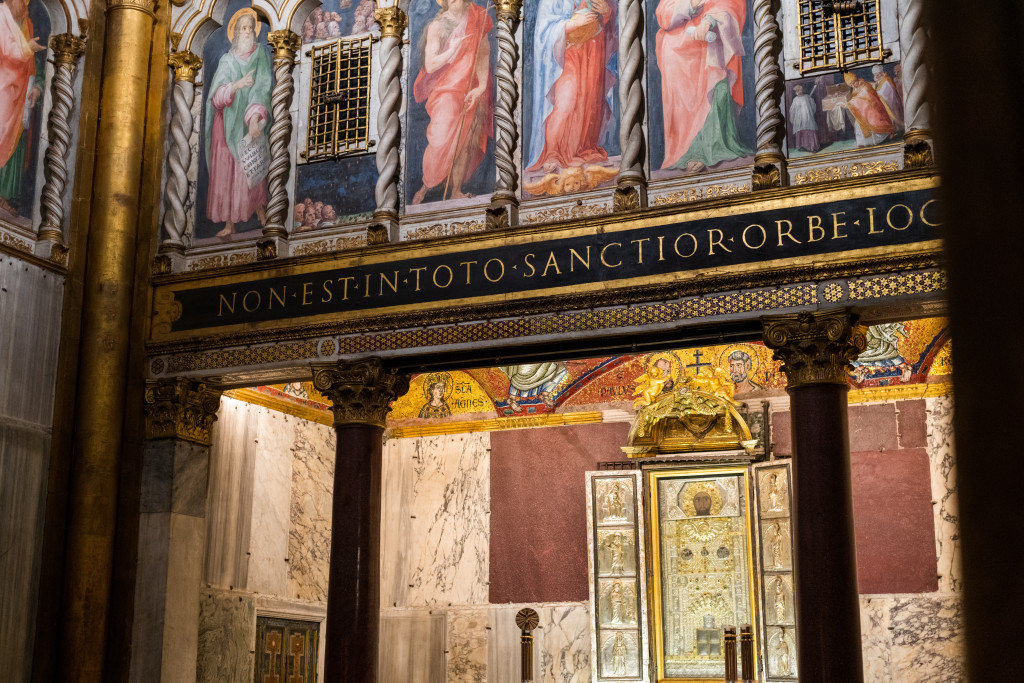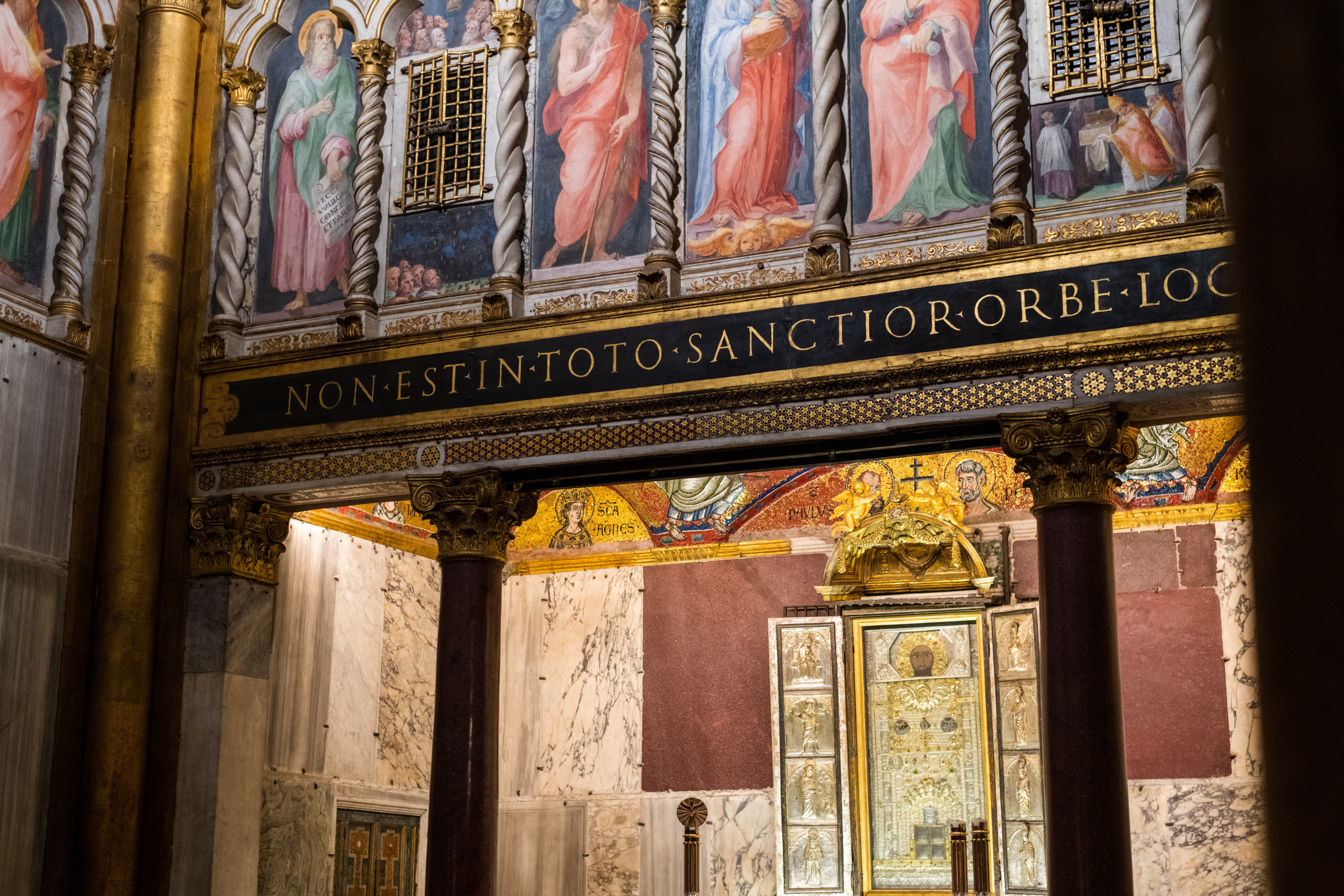


Black Christ on altarpiece of Sancta Sanctorum Chapel of the Lateran Palace. Three portals enter into the interior sanctuary of the chapel, above which reads NON EST IN TOTO SANCTIOR ORBE LOCUS, "there is no place in this world more sacred."
Centered on the back wall is the famous icon of Christ , known as the Archeiropoieta Lateranese icon. "Archeiropoieta" refers to images not made by human hands, and the tradition of this icon suggests that Saint Luke began the painting that was then finished by an angel. A St. Agnes mosaic is visible to the side.
The grandeur of this inner space of the Sancta Sanctorum invites reflection on the majesty of Christ, the Son of God who became flesh. Regardless of the tension around the origin of the painting, whether it was painted by human or holy hands, the mystery of Jesus as both God and man continues to inspire the church. The frescoes of saints and martyrs all stand as a cloud of witnesses to the King of kings and the Lord of lords. Women are present in that cloud of witnesses including Agnes of Rome, a third century martyr, who is joined in this inner room by images of Peter, Paul, Lawrence, Stephen, and Nicholas.
Centered on the back wall is the famous icon of Christ , known as the Archeiropoieta Lateranese icon. "Archeiropoieta" refers to images not made by human hands, and the tradition of this icon suggests that Saint Luke began the painting that was then finished by an angel. A St. Agnes mosaic is visible to the side.
The grandeur of this inner space of the Sancta Sanctorum invites reflection on the majesty of Christ, the Son of God who became flesh. Regardless of the tension around the origin of the painting, whether it was painted by human or holy hands, the mystery of Jesus as both God and man continues to inspire the church. The frescoes of saints and martyrs all stand as a cloud of witnesses to the King of kings and the Lord of lords. Women are present in that cloud of witnesses including Agnes of Rome, a third century martyr, who is joined in this inner room by images of Peter, Paul, Lawrence, Stephen, and Nicholas.
Title of Art: Jesus Christ the Savior
Ritual Pose/Object: crown
Art Form: Mosaic
Inscription Text: NON EST IN TOTO SANCTIOR ORBE LOCUS
Exhibit Institution: Palazzo Lateranense (Lateran Apostolic Palace)
Exhibit Location: Rome, Italy
VM Image #: 0046
Photographer: Shala Graham
Date of Photograph: December 31, 2022
Featured on Podcast: Listen to Podcast
